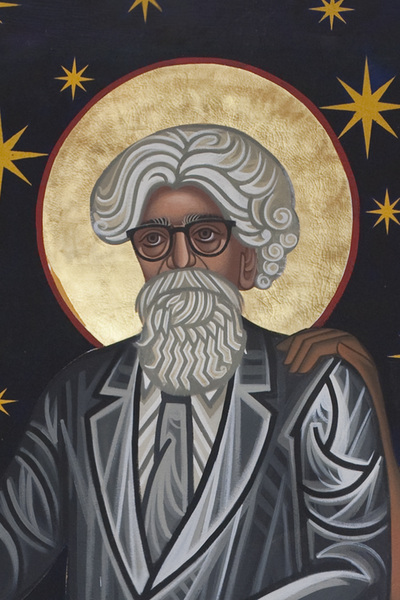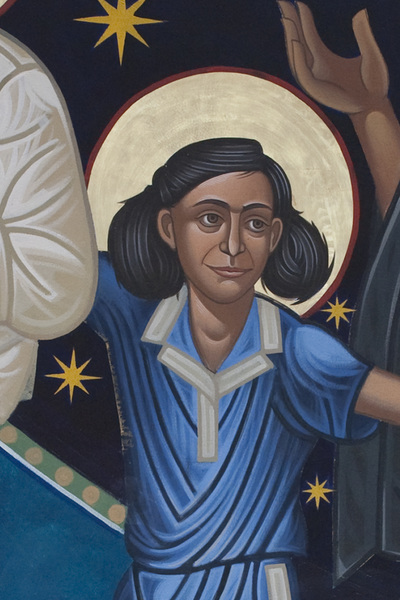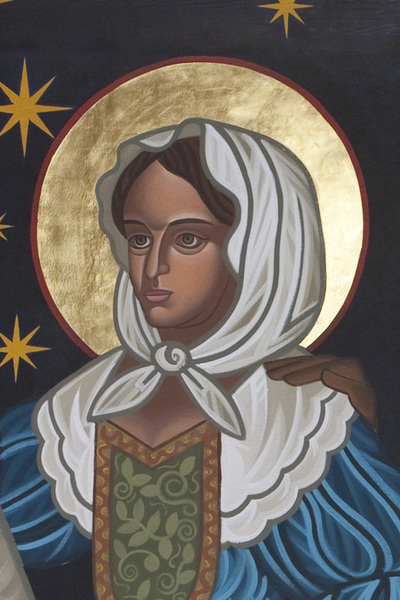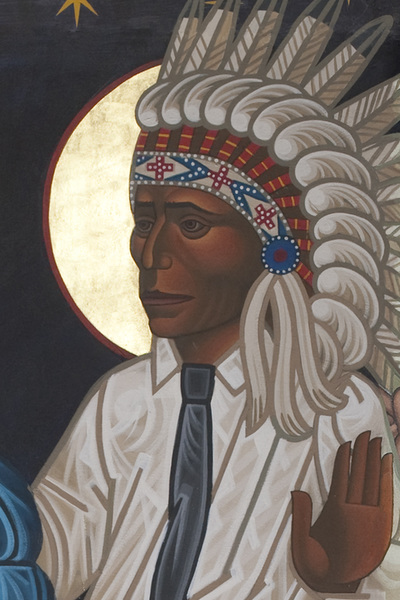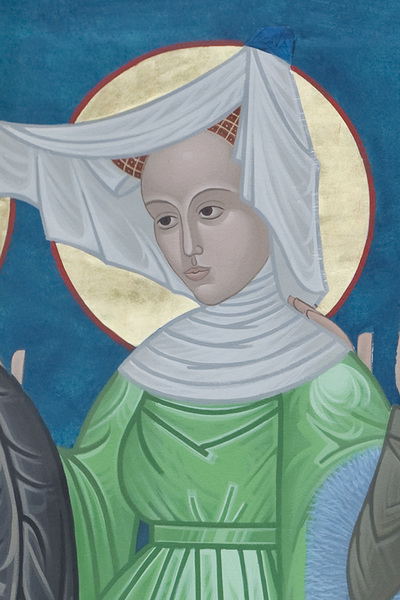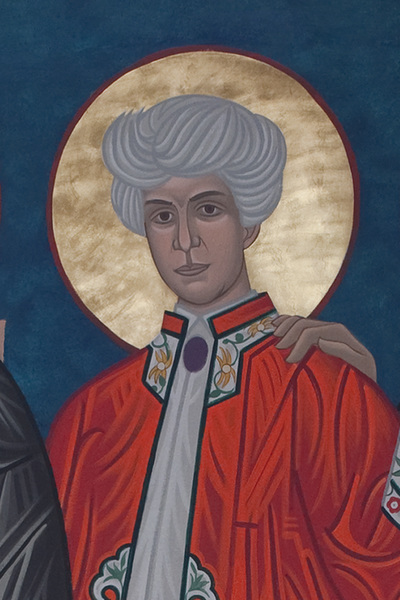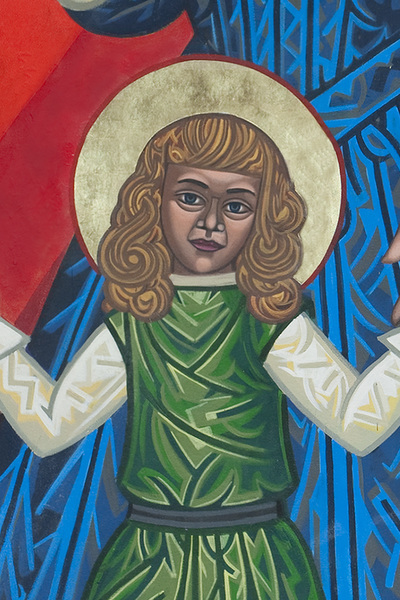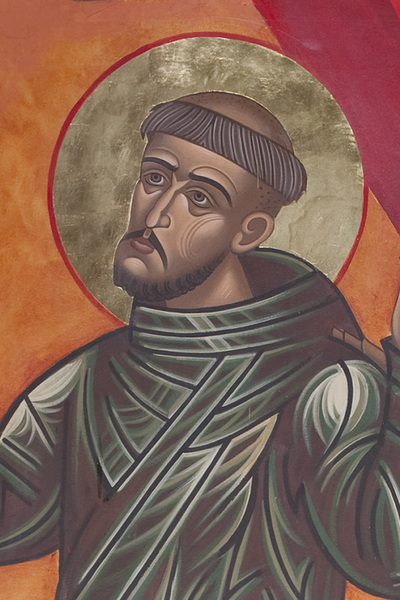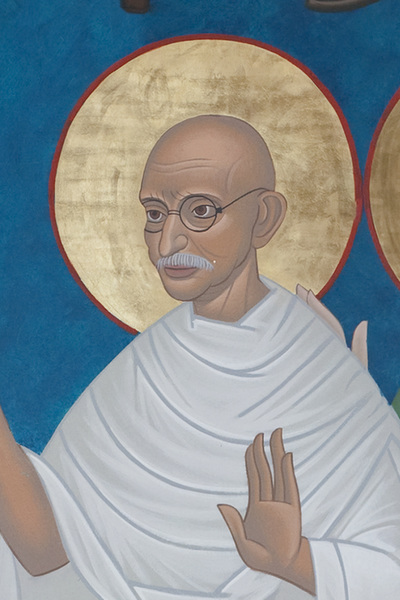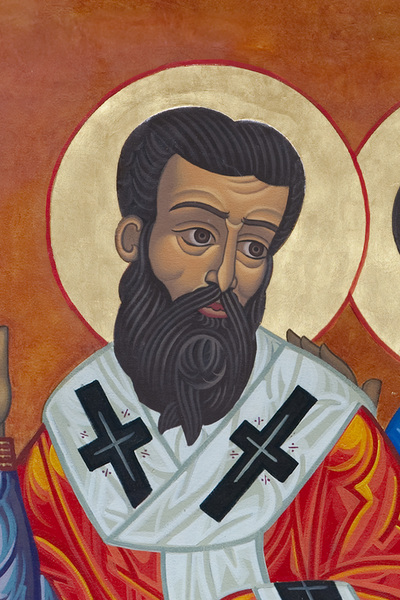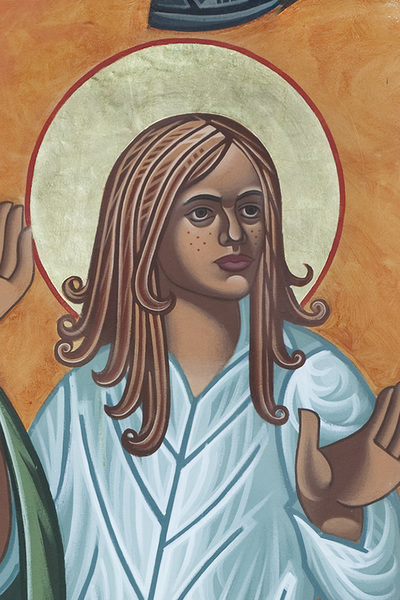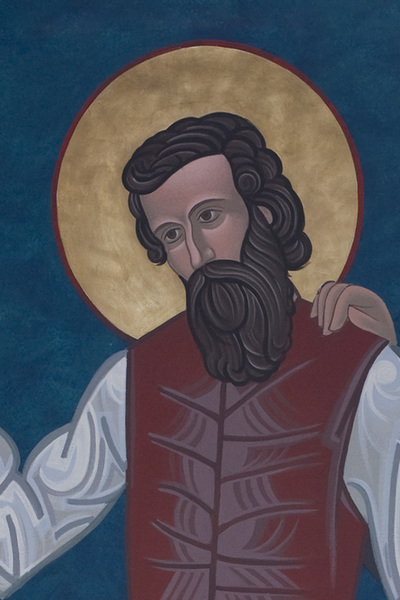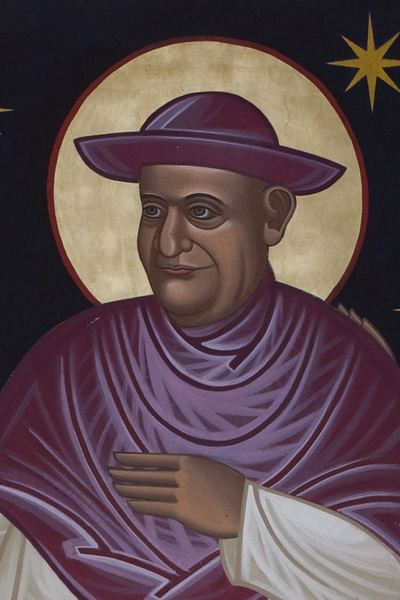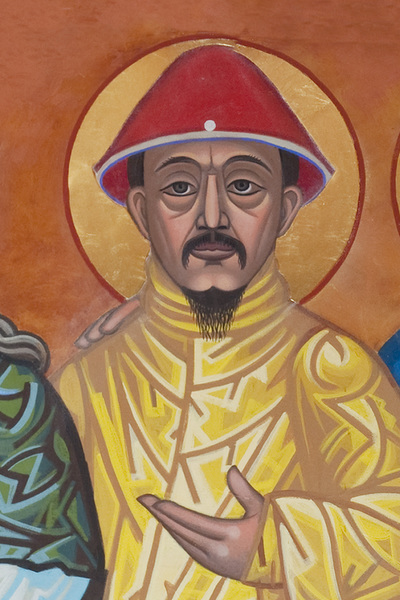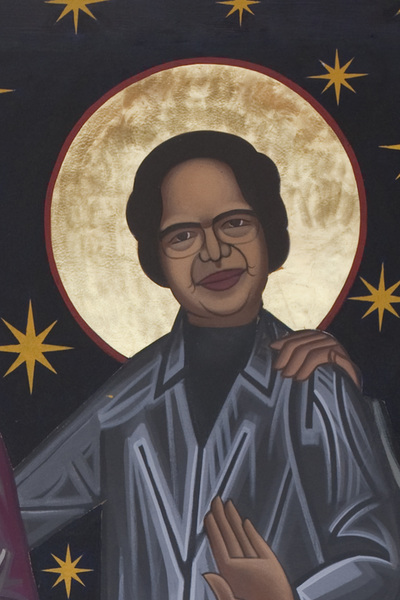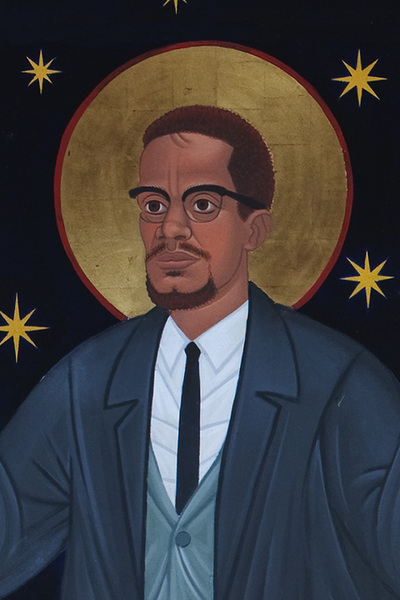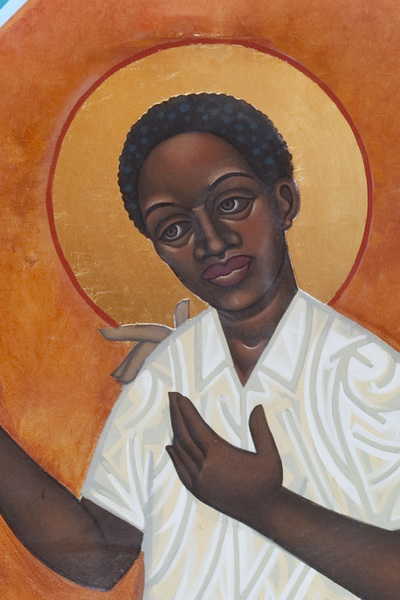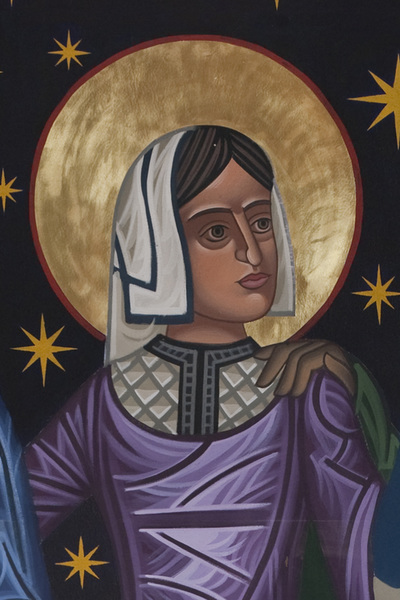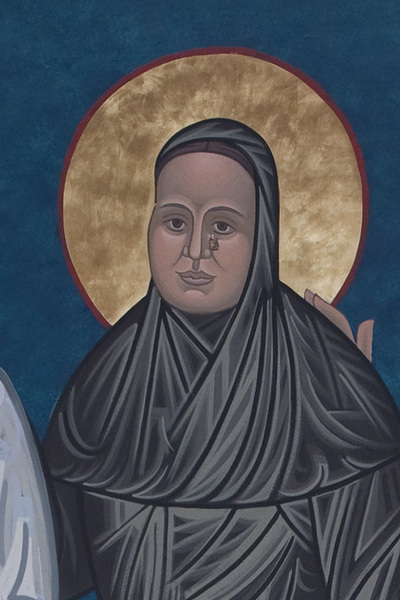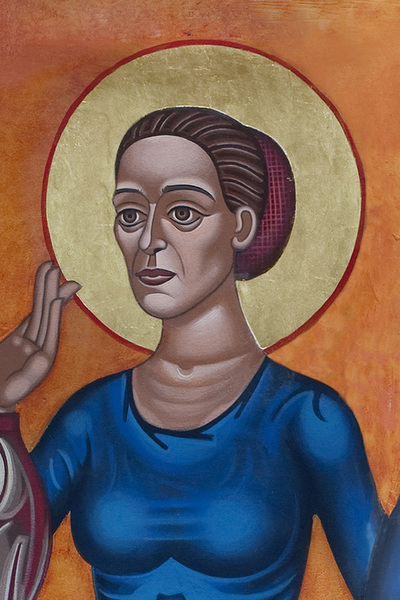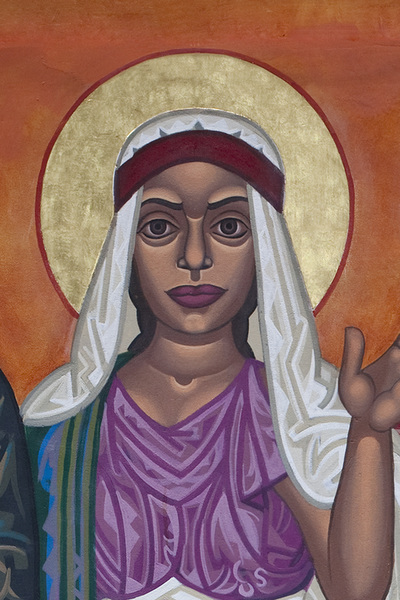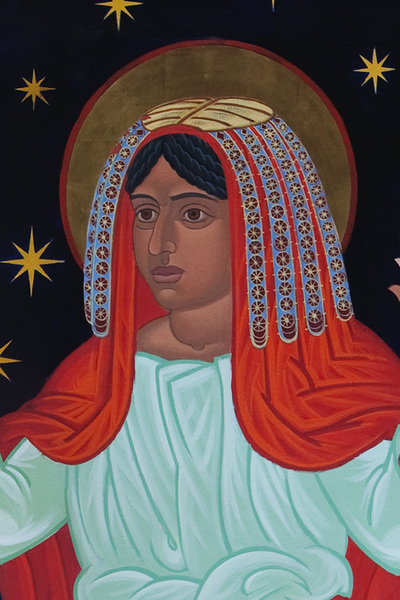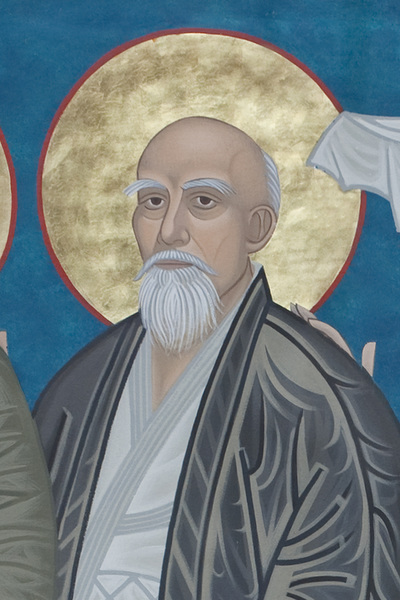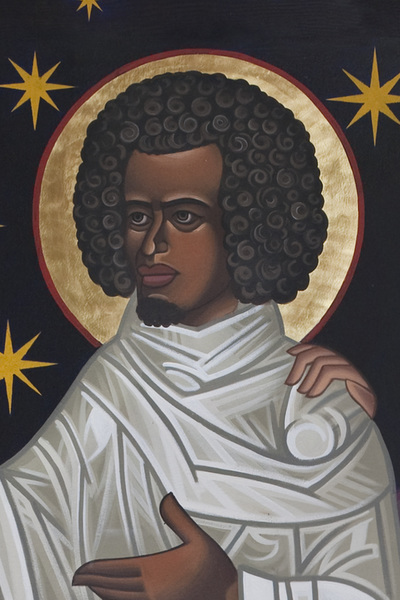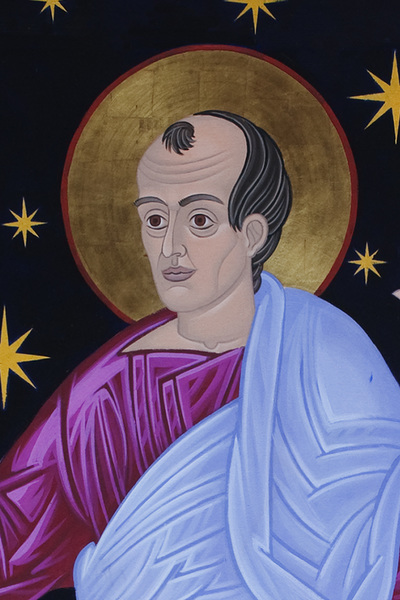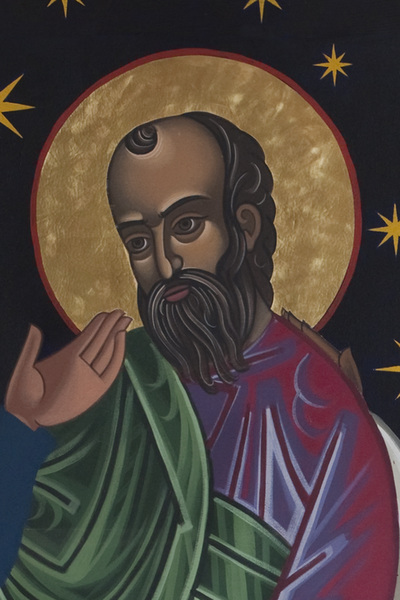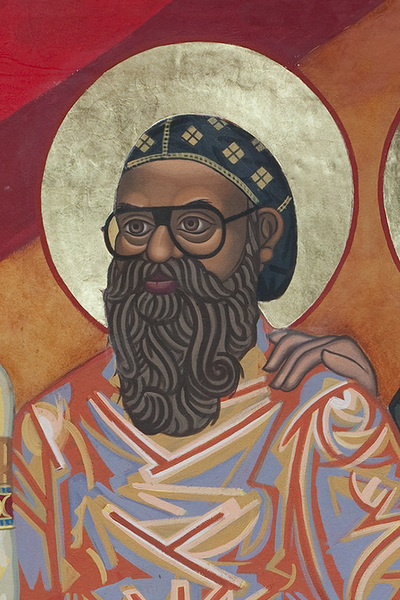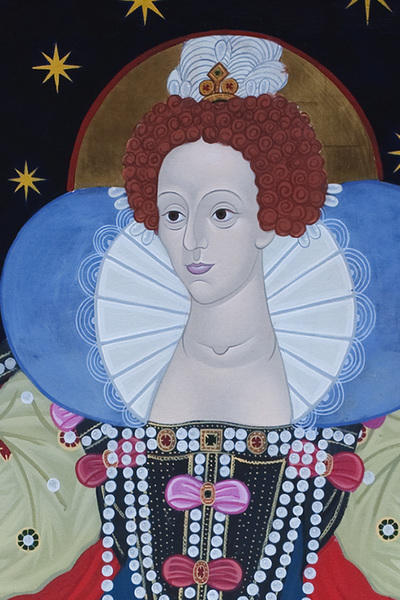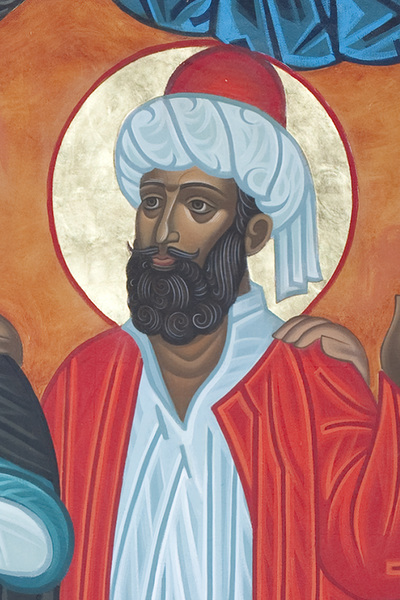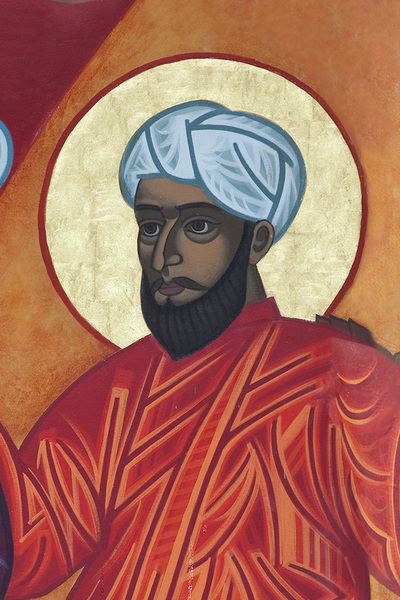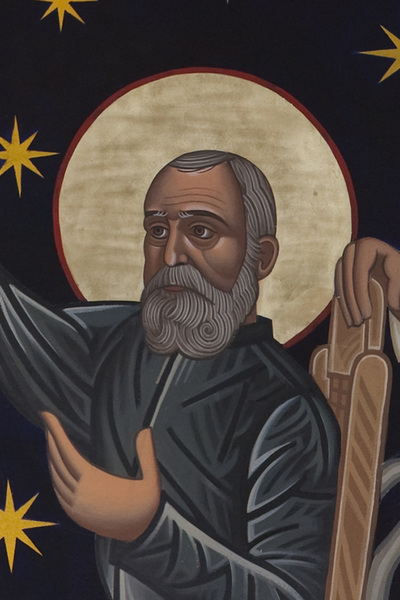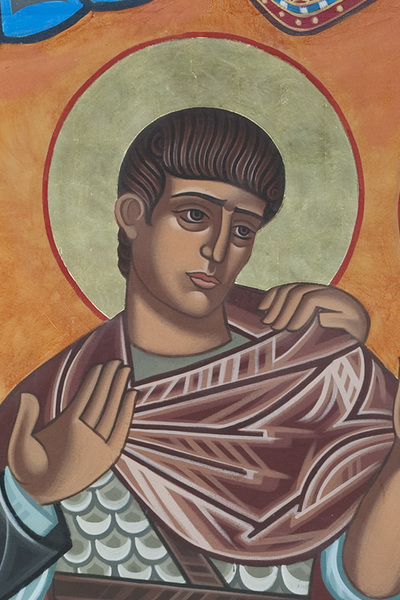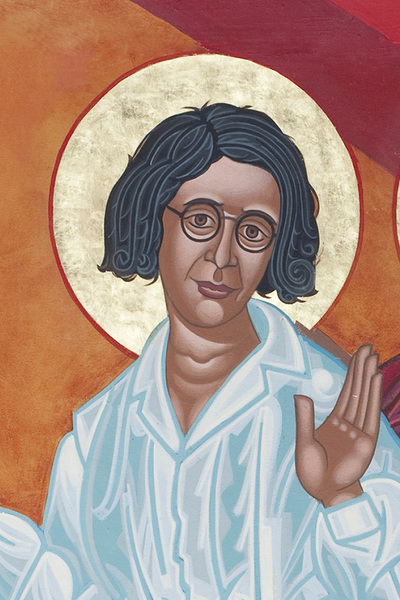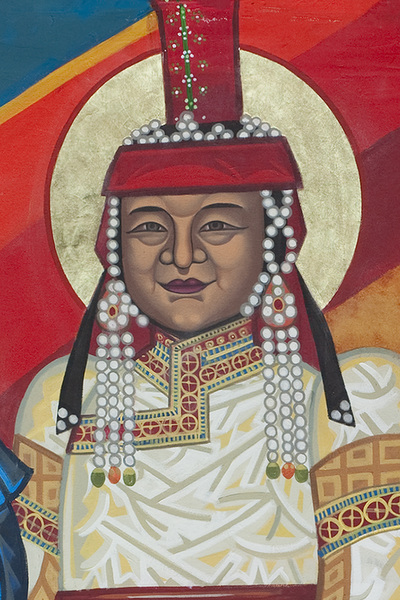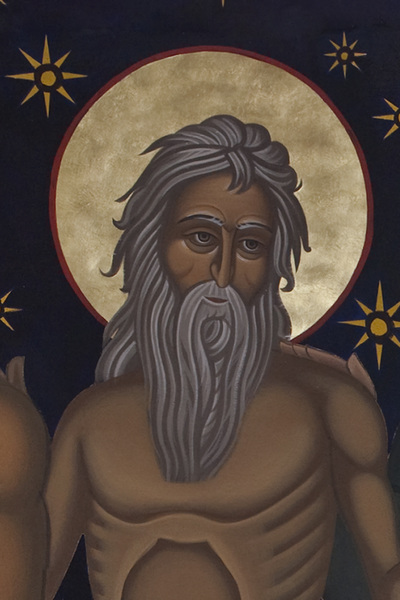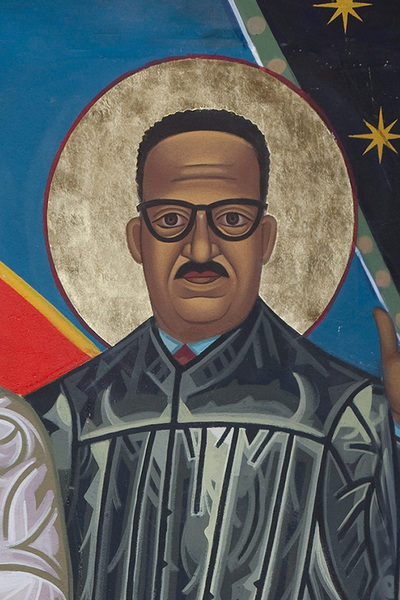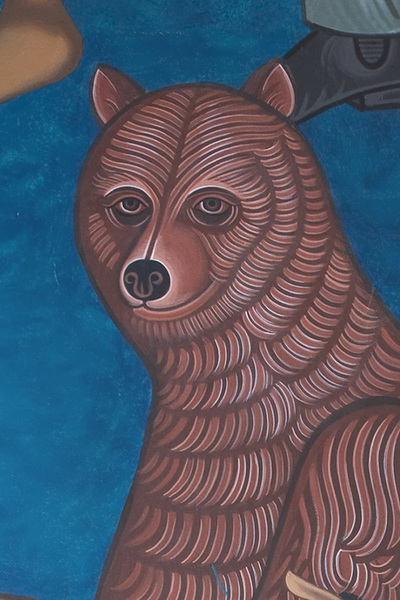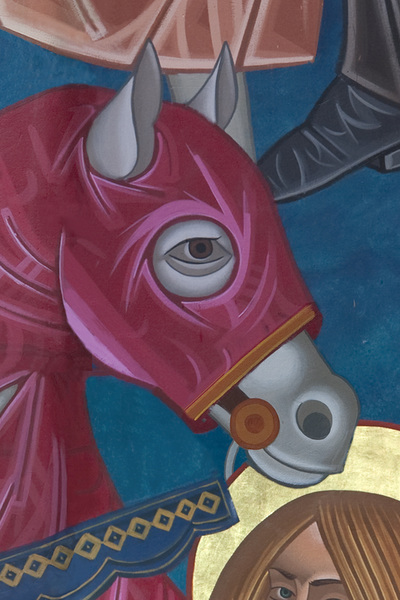Short biographies of some of God's friends
|
Abraham Joshua Heschel (1907–1972) Polish-born, German-educated theologian and philosopher. Deported by the Nazis in 1938, he made his way to the Jewish Theological Seminary in New York, where he taught until his death. He worked to revive mystical, prophetic, and active dimensions of Jewish piety and practice, stressing experience and personal response in spirituality. He was a leader in American civil rights and anti–Vietnam War activism. (December 23)
Aelred of Rievaulx (c.1110–1167) English Cistercian monk and abbot of the monastery of Rievaulx, who regarded deep human friendship as an essential element of spiritual life and closeness to God. (January 12) Agnes Sanford (1897–1982) American Episcopal laywoman who restored the practice of healing prayer to mainline churches. (February 21) Alexandrian Washerwoman (4th century) To the desert fathers and mothers, the founders of monasticism in the 4th and 5th centuries, an anonymous ordinary woman praying ceaselessly at her work represents the holiness of all that is ordinary and routine. (July 29) Andrei Rublev (c. 1365–c.1430) Russian Orthodox monk and icon painter. He worked as an assistant and disciple to Theophanes the Greek, and eventually painted images for prayer that synthesized Theophanes’ work with purified Russian folk traditions, creating an iconography that was intimate and human. Anne Frank (1929–1945) Young German Jewish girl whose extraordinary diary, written while in hiding from the Nazis, expressed an unshakable faith in the fundamental goodness of humanity, her unapologetic fears and frustrations with the people she lived with in confinement, her longings and desires, and her great hope for a future she knew she might not ever see. (June 12) Anne Hutchinson (1561–1643) English Puritan poet, teacher, and theologian who was banished from Massachusetts Bay Colony for teaching that God could be known through intuition and experience. After this, she and her husband joined Roger Williams in Rhode Island, helping found there a community more open to freedom of conscience. Bacchus and Sergius (4th century) Roman soldiers who were martyred for their Christian faith. The ancient veneration of these two men offers gay Christians, and those who love and support them, a ray of hope by showing how the Church openly honored two people of the same gender in a loving relationship. In their relationship as Sergius and Bacchus found courage for the choice they were called to make as witnesses to their faith. (October 7) Barnabas (1st century) A Levite Jew, a man of learning and generosity and one of the first post-resurrection apostles, deeply respected by the disciples. His trust in the authenticity of Paul’s conversion led to their acceptance of this former persecutor. He was the first apostle to embrace the evidence of God’s grace in the hearts of Gentile converts to the Way. (June 11) Bartolomé de las Casas (1474–1566) A young Spanish adventurer who accompanied Columbus on his second voyage, he received large New World land holdings and native slaves. He was so moved by their suffering that he became a priest, freed his slaves, and finally came to a moral rejection of slavery in any form. As a Dominican monk and eventually a bishop, he argued against slavery before theologians, politicians, and King Phillip II of Spain. Las Casas was the first Christian theologian to argue that enslaving fellow humans was sin, always and under any circumstances. (July 17) Black Elk (1872–1957) A holy man of the Oglala Sioux, visionary, mystic, and Catholic convert. He showed forth through his life and teaching God’s radiant and powerfully healing presence in all of nature. Caspar David Friedrich (1774–1840) German Romantic painter whose awesome landscapes and seascapes express the profound mystical presence of God in the dark side of existence. (May 7) Cesar Chavez (1927–1993) The son of Mexican migrants to California, he devoted his life to organizing farm workers. His movement gave migrant workers bargaining power, restoring dignity to this poor and dispossessed population. A man of religious faith and commitment to nonviolence, he embodied his “deepest belief that only by giving life do we find life, that the truest act of courage . . . is to sacrifice ourselves for others in a totally nonviolent struggle for justice.” (April 23) Charles Darwin (1809–1882) English naturalist whose On the Origin of Species by Means of Natural Selection (1859) and The Descent of Man, and Selection in Relation to Sex (1871) offered an evolutionary understanding of the development of life on earth, challenging conventional interpretations of creation and inviting whole new ways of thinking of living beings, humanity, and God through process, system, and change. Darwin was a deacon in the Church of England. (April 19) Charles Wesley (1757–1834) Anglican priest, hymn writer, and, with his brother, John, founder of the Methodist movement in the Church of England. Their innovative mission to the working poor offended Church authorities in England’s rigid class structure by teaching the royal and priestly dignity of the least Christian, through an emphasis on feeling and experience. (March 3) Chiune Sugihara (1900–1986) Japanese diplomat in Lithuania during World War II who defied government policy and issued as many visas as he could to save thousands of Jews fleeing annihilation by the Nazis. (July 31) Christine de Pisan (1365–1431) French writer and single mother whose witty theological polemic tweaking clergy attitudes towards women was the first writing of its kind available to a wide audience. Dante Alighieri (1265–1321) Florentine poet whose towering three-part work, The Divine Comedy, takes us on his soul’s journey. He begins wandering blind and in despair in Il Inferno and concludes in Paradiso with an extraordinary vision of the dancing saints encircling “the love which moves the sun and other stars.” (September 13) Desmond Mpilo Tutu (b. 1931) Tutu was the first African to serve as Bishop of Lesotho, Bishop of Johannesburg, and Archbishop of Cape Town. Awarded the Nobel Peace Prize in 1984 for his staunch resistance to apartheid, he later headed South Africa’s Truth and Reconciliation Commission, as always counseling forgiveness rather than revenge for past injustice. The only saint still living when his likeness was placed on St. Gregory’s walls. Donaldina Cameron (1869–1968) Founder of Cameron House in San Francisco’s Chinatown, this Scottish Presbyterian social worker defied Chinese gangs and crime lords, corrupt police, and complacent politicians to rescue girls kidnapped from China to San Francisco for sale as prostitutes and slaves. Eleanor Roosevelt (1884–1962) A woman of privilege who as First Lady chose to draw near to suffering, seeing and listening to people’s experience of being poor or dispossessed to enlarge her compassion. She used her access to political power as a means to offer them dignity and relief. (November 7) Ella Fitzgerald (1927-1996) American chanteuse who overcame a tortured childhood, including desperate poverty and time as a prostitute, to become a singer of enormous grace and joy. Emily Dickinson (1830–1886) American lyric poet whose spare, distilled forms, jazz-like rhythms, and fiercely personal voice vastly influenced modern poetry. Raised in an intellectual Puritan family at a time when Transcendentalism was becoming a force, she explicitly abjured a declaration of faith while in college and ceased churchgoing as she withdrew from public life. But much of her work revolved around her passionate struggle with God, putting her in the company of earlier masters like John Donne and George Herbert. Esther John (Qamar Zia) (1929–1960) Teacher and missionary to Indian women, she was converted to Christianity by reading the 53rd chapter of Isaiah. She kept her faith secret but eventually ran away from home, afraid her family would force her to marry a Muslim husband, going north to the Punjab, where she worked in a mission hospital. She became a teacher and evangelized in the local villages, teaching women to read and working with them in the cotton fields. She was found murdered in her bed. (February 2) Florence Nightingale (1820–1910) Unitarian, sometime Anglican, accused of “eclectic religious beliefs.” The leading figure in the development of modern nursing practice through her pioneering work in the Crimean War, she recruited and trained women to serve in places of disease and violence where Victorian sensibilities taught that “gentle ladies ought not to go.” Among her recruits were Anglican nursing sisters from the Sisters of Saint Margaret. (August 13) Francis of Assisi (1182–1226) Italian mystic and church reformer who sang God’s work in all of nature—sun, moon, plants, animals, life, and death— and in the passion of Christ. His vernacular hymns, popular processions, and the first Christmas crèche were among his sensual and intuitive church reforms that appealed to people’s imagination, hope, and delight. Following one story of his peacemaking with animals, Francis is painted with a wolf. (October 4) Fyodor Dostoievski (1821–1881) Russian novelist and mystic who came to faith while imprisoned for youthful revolutionary writings. His grandiose and addictive nature was slowly transformed and healed by his vision of Christ and the love of his second wife. He wrote prophetically of the bloodshed that principled “lovers of humanity” would wreak on the world by rejecting God and God’s love expressed through people. His vision of fundamental goodness in ordinary people made him hope for universal salvation. (January 28) Gandhi (1869–1948) Martyred Indian spiritual leader; activist for peace and reconciliation between Muslims and Hindus. Inspired by Jesus’ Sermon on the Mount, this Hindu teacher of peace took on the British Empire to free India by means of a nonviolent moral conflict. He became one of the principal models for the Rev. Martin Luther King Jr., whose own practical applications of Jesus’ teaching offered black and white America hope and promise for nonviolent social change. (January 30) Gregory of Nyssa (331–396) Cappadocian bishop and theologian, our patron.(March 9) Hypatia (370–415) Pagan mathematician and philosopher who drew pupils from throughout the Greek world, Christian and pagan. Cyril, Archbishop of Alexandria, perceived her as a threat to the Church, and she was martyred at the hands of Christian monks. As Christian humanists, we honor Hypatia’s learning and courage, holding her as a witness to intellectual curiosity and honest inquiry, which are closer to God than the angry certainties of fundamentalism. Iqbal Masih (1982–1995) This spirited and heroic Pakistani Christian boy was sent to work weaving rugs at age five. When he was 10 he escaped from the rug merchants to whom he had been bonded, enrolled in school, and began speaking publicly to other bonded children, inspiring thousands to leave their owners. Just months after he testified before the U. N. Commission on Human Rights at age 13, assassins, murdered him in Pakistan as he left church on Easter Day. (Easter Day) Isaiah (8th century B.C.) Hebrew prophet of the Exile whose vision of the majesty, holiness, and glory of God took possession of his spirit. Janani Luwum (1922–1976) Brave and energetic Ugandan cleric who served as Archbishop of Uganda, Rwanda, Burundi, and Boga-Zaire during the brutal regime of Idi Amin. He pressed ahead with reforms in his church in time to mark the centenary of the creation of this Anglican province, and in February 1976 delivered a protest to Amin against all acts of violence committed by state security. He was murdered by Amin’s forces shortly after. Jenny Read (1945–1976) Artistically gifted, intellectually and spiritually inquisitive young Episcopal sculptor in San Francisco who was raped and murdered while at work on a sculpture of St. John of the Cross. (May 18) John Coltrane (1926–1967) African-American saxophone player, composer, eminent jazz innovator. Coltrane’s faith in God was a powerful healing force in overcoming his addiction to heroin. His seminal album, A Love Supreme, testifies to God’s omnipotence and power to remake us. He dedicates his music to God, saying. “Let us sing all songs to God.” (July 17) John Mason Neale (1818–1866) Anglican priest who founded the Sisters of Saint Margaret for medical nursing work among England’s rural poor. He insisted on professional training for the nurses and fostered the autonomous leadership of women in their community. Forging strong ecumenical ties with Eastern Orthodoxy, he brought a daring, renewed feeling of beauty and tenderness to Anglican liturgy, hymnody, and architecture. (August 6) John Muir (1838–1914) Writer, hiker, lover of California wilderness, and father of the modern environmental movement. In spite of an abusive religious upbringing, he remained a deeply spiritual man and an eloquent spokesperson for our sacred responsibility to care for the earth. He said, “In wildness is the preservation of the world.” (December 24) John XXIII (1881–1963) The pope responsible for the Second Vatican Council thus “opening the windows” to let fresh air into the Catholic Church. (June 3) Julia Morgan (1872–1957) Pioneering architect, her concept of sacred space influenced the design of many buildings, including St. Gregory’s Church. She aggressively sought contracts, sometimes offering her services gratis, to build beautiful public spaces. (January 20) Julian of Norwich (1342–c.1417) English mystic, anchoress, and spiritual director, author of Revelations of Divine Love, the first work written in modern English. Though she lived amidst the horrors of the Black Death and of church torture and burning of heretics, Julian’s startlingly realistic visions of Jesus’ sufferings on the cross and her loving conversations with him moved her to believe the words she heard him say: “All manner of things shall be well and that despite any imaginable sin, suffering or evil.” (May 8) The Kangxi Emperor (reigned 1661–1722) Though not himself a Christian, he decreed tolerance for Christian faith and preaching, built churches, and wrote moving poetry on the passion of Christ. We honor his generosity of spirit and pray that we will extend the same appreciation, understanding, and good will towards those of other faiths and of no faith. King David (1010?–970? B.C.) Guerrilla warrior, despotic king, murderer of Uriah, writer of psalms. Among his sons were Solomon, who gathered scholars to create the first systematic collection of the sacred texts that would become the Bible, and Absalom, who would die leading a revolt against David. We honor this complex and contradictory character for the simple, clear devotion of his Psalm 23 and his shameless joy in dancing naked before the Ark of God. Lady Godiva (c.1040–1080) Godiva’s legend has her riding horseback naked through the streets of Coventry to protest the local lord’s (her own husband’s) new taxes that would strip the poor of everything, even the clothes off their back. Her protest says to us, “You have done this and it is your shame; I am not ashamed myself, for this woman’s body was created by God.” Li Tim Oi (1907–1992) Hong Kong Chinese, the first woman priest in the Anglican Communion. Ordained as the British fled Hong Kong in World War II, she served faithfully during the Japanese occupation. After the war Canterbury denied her priesthood, but she slipped back into China and ministered to a whole generation hidden from the West. Later she emigrated to Canada and was welcomed for her pioneering service. We remember her for setting faithfulness above controversy or personal importance. She was ready to embrace whatever God asked of her. (May 5) Liliuokalani of Hawaii (1838–1917) A devout Anglican and pacifist, she reigned as the last queen of Hawaii from 1891–1893. Unwilling to permit Hawaiian blood to be shed in defense of the monarchy, she was deposed by colonists, held under house arrest in her own palace, and convicted of treason. While confined, she had only the Bible and the Anglican Prayer Book to read, both of which influenced the great body of music she composed. (September 2) Lucian Tapiedi (1921 or ’22–1942) During the Japanese invasion of the island Tapiedi -a teacher in the mission school remained with his people, as did many of the other missionaries. Ironically, he was not killed by the Japanese; instead, he died at the hands of a fellow Papuan, a member of the Orokaiva tribe named Hivijapa. Hivijapa later converted to Christianity and took the name Hivijapa Jucian in memory of his victim. Lucy Wright (1760–1821) Successor to Mother Ann (founder of the Shakers), she is credited with developing choreographed sacred dance and the use of hymns and anthems in Shaker worship. (February 7) M. M. Thomas (1916–1997) A layman from the Mar Thoma Church, Kerala, Madhathilparampil Mammen Thomas was a pioneering ecumenical leader, one time chair of the Central Committee of the World Council of Churches, and director of the Institute for the Study of Religion and Society in Bangalore. He died traveling third class on a train from Madras. Malcolm X (1925–1965) Born Malcolm Little, also known as El-Hajj Malik El-Shabazz. While in prison for burglary, he joined the black separatist Nation of Islam. His radical vitriolic eloquence led Islamic leader Elijah Mohammed to suspend him. Malcolm went on pilgrimage to Mecca, where he was converted by a vision of one humanity worshipping one God in peace. He repudiated racism in any form and returned to the U.S. to work for justice for African Americans and for peace between the races. (February 21) Manche Masemola (1910–1928) At age 18, Manche joined a class to prepare for baptism in her native Sekhukhuneland (Africa). Her parents opposed her becoming a Christian; every time she returned from class she was beaten. Finding that nothing could shake her faith, her family dragged her out of their hut and by turns flogged her until she died. As she had predicted to her priest, she was baptized “with her own blood.” We honor her single-minded desire to know God. Margaret Mead (1901–1978) Anthropologist, deeply engaged observer of cultures best known for her seminal work on adolescent development in Samoa. As an authority on rites of passage she helped draft parts of the 1979 Book of Common Prayer dealing with baptism and confirmation, and argued to preserve old stories used in the Easter Vigil for their power in creating living ritual. Marguerite de Porete (?–1310) French mystic and author of Mirror of a Simple Soul. When accused of the heresy of a “Free Spirit,” she remained contemptuously silent before the Inquisition and was burned at the stake in Paris. (June 1) Maria Skobtsova (1891–1945) A divorced woman and Russian intellectual who became a nun, worked with the poor in France, and was martyred by the Nazis for hiding Jews. Known for being outspoken, pragmatic, and daringly funny. Metropolitan Antony Bloom noted that as a young priest “it offended me then that she liked to sit in Paris bistros in her nun’s habit, smoking cigarettes, drinking beer and talking with simple workers. I am ashamed to say I kept my distance from that woman because she was doing just what Christ did.” Martha Graham (1894–1991) Modern dance celebrates the human body as it is and the music and poetry of natural movement. Martha Graham made enormous contributions to this work and spoke about it in terms that are recognizably mystical. As a dancer, she refuted the idea that the joy of dancing must be restricted to the young by continuing to choreograph and perform liberating, finely nuanced, and significant work well into her eighties. Martin Luther (1483–1546) Luther remained a theologian and spiritual teacher who valued experience and feelings as a way of knowing God. Luther’s writings show a man wonderfully unguarded in prayer and “battle with the Devil.” Rejecting a literalism that limited God, Luther taught that Jesus’ “ascension” meant that he was now personally present and available in every place, moment, or situation. (February 18) Mary Magdalene (1st century) “The apostle to the Apostles.” When the other disciples fled, she stayed with Jesus through his crucifixion, and was the first he appeared to after his resurrection and the one he sent to proclaim it. She is unusual among biblical women in that she is never identified by her relationship to a male figure (“Mary the wife of” or “Mary the mother of”) but only as “Mary of Magdala.” We remember her as a person and disciple in her own right. (July 22) Mirabai (1498-1546) Medieval bhakti poet of northern India. After refusing to cast her body on her husband’s funeral pyre, she took up a wandering life. Her poems poignantly convey the sublimity of mystical union with the divine and longing despair at its loss—a longing so powerful it itself becomes the sign of the Beloved’s presence. Miriam (14th–12th? century B.C.) Older sister of Moses, thought to be the actual voice behind one of the oldest poems in the Hebrew Scriptures, the Song of Moses, celebrating the previously unimaginable event of God taking the side of the forgotten, dispossessed slaves and leading them to freedom. In Exodus, Miriam leads the women of Israel in a dance of thanksgiving for the freedom God has given them. Morihei Ueshiba (1883–1969) Ueshiba understood budo (martial practice) to be for the reconciliation and protection all things. He founded Aikido, “the way of reconciliation,” which resolves conflict by harmlessly disarming an attacker and avoiding injury even to the “enemy.” He said, “To injure an opponent is to injure yourself.” (April 26) Moses the Black (330–405) Ethiopian thief and gang leader who underwent a conversion and become one of the most revered of the Desert Fathers, founders of monasticism. (August 28) Nellie and Dorothy Lincoln Nellie and her husband, Rev. James O. Lincoln, founded a camp for children with chronic and life-threatening conditions as a memorial to their daughter, Dorothy, who died in childhood. Named for her, St. Dorothy’s Rest in northern California also hosts retreats and conferences for churches, nonprofits, and annual camps for seriously ill children. Norman Perrin (1920–1976) American Gospel scholar who developed new principles for recovering the probable original teaching of Jesus in the parables. He argued that Jesus’ central, daring witness was the sacred meal he kept with “unprepared sinners,” the sign we imitate at St. Gregory’s by welcoming everyone to share in Eucharist. Origen (185–254) Alexandrian theologian and teacher whose homilies deeply influenced Gregory of Nyssa. Origen established the norm of scripture commentary for Christian theology. Probably the first Christian to learn Hebrew in order to read the Old Testament in its original language Patrick of Ireland (389–461) In a time of cultural collapse and violence, Patrick’s missionary work to the Irish was humanist, peacemaking, and expansive. With his missionary co-workers, he created a Celtic Christianity that embraced ancient reverence for nature while suppressing old practices like human sacrifice to the nature gods, and that used the bardic traveler’s spirit of old Celtic spirituality to tame the roaming warrior hero tradition. (March 17) Paul Erdős (1913–1996) Erdos lived as an itinerant mathematical angel, traveling constantly, unexpectedly showing up on other mathematicians’ doorsteps when they found themselves stuck while developing exciting new theories. Erdos would stay long enough to help find a way through the difficulty, then move on to the next person who needed a hand. He lived very simply, depending on friends to tend his needs. Paul of Tarsus (1st century) Author of nearly half the New Testament. Paul, though personally a strict moralist and attracted to simple answers and clear, comprehensive order, struggled in his writings to include his startling vision of God’s unreserved embrace of all humanity in Christ. He said: “God was in Christ, reconciling the world to himself, not counting people’s sins or faults against them, and God entrusted to us the news that people are reconciled.” (January 25) Paulos Mar Gregorios (1922–1996) Born Paul Verghese in Kerala, India. Visionary theologian, Orthodox bishop of New Delhi and North India, and biographer of his namesake, Gregory of Nyssa, he brought the wisdom of his heritage to the ecumenical movement and his work for political and social change worldwide. He was among the most creative and influential leaders of the World Council of Churches during its early development. He wrote, “When we work for the unity of humanity we stand on our own convictions and traditions, while sharing a great vision of God at the center of all.” Queen Elizabeth I (1533–1603) Queen of England. When much of Europe was torn by heresy trials and religious war, Elizabeth conceived a Church in which people of diverse beliefs, opinions, and doctrines could be one through shared prayer and Eucharist. She used her power to forge religious peace on this new principle. (March 23) Roland Allen (1868–1947) Anglican missionary in East Africa, he became a controversial critic of the existing order, seeking to change drastically the paternalistic colonial system of mission governance. He wanted to restore the pattern he saw in Paul’s missionary work: preaching the Good News, quickly raising up local leadership, trusting them with power, and moving on. Jalal ad-Din Rumi (1207–1273) Mystical Persian Sufi poet appreciated by Christians, Jews, Muslims, and unbelievers in his day and ours for his striking expression of the presence of God in ecstasy and the everyday. As a teacher, he invited others into mystical union with God through poetry and dancing. He created the whirling, meditative dance of the Sufis. (December 17) Sadi (1184-1291) Medieval Persian poet whose Gulistan (The Rose Garden) and Bustan (Orchard) are classics of Sufi mystical literature. His work includes the parable of the injured fox fed by the tiger, and he is depicted with a tiger. Samuel Joseph Isaac Schereschewski (1831–1906) Schereschewski was sent to China to become bishop of Shanghai, but on landing he immediately fell ill with a fever that left him paralyzed. Unable to carry out his original mission, Bishop Schereschewski spent the rest of his life translating the Bible into Chinese. We honor him for his perseverance in the face of tragedy and limitation. Seraphim (1759–1833) Russian Orthodox mystic of joy, whose love for all of God’s creatures led him to share his fasting rations with a bear (with whom he is shown), saying, “The poor bear can’t know it is Lent.” (January 2) Sergius and Bacchus (4th century) Roman soldiers who were martyred for their Christian faith. The ancient veneration of these two men offers gay Christians a ray of hope by showing how the Church openly honored two people of the same gender in a loving relationship. In their relationship as Sergius and Bacchus found courage for the choice they were called to make as witnesses to their faith. (October 7) Simone Weil (1909–1943) French Jewish woman classicist and philosopher. Rapturously in love with Jesus Christ, she refused to seek baptism in order to remain identified with a world seeking redemption. (August 24) Sojourner Truth (1795–1883) An illiterate freed slave, she was an eloquent critic of slavery and sexism, transfixing audiences with the force and simplicity of her message of Christian love and tolerance. Her famous “Ain’t I a woman?” speech, delivered to a women’s rights convention in 1851, forever disrupted assumptions about race, class, and gender in American society. Sorghoqtani (? –1250?) Mother of Kublai Khan, as well as of another khan of China and one of Persia; she kept a Christian household and had her sons educated by priests. Though none of her sons professed Christianity officially, they were friendly to Christians. Her Syrian Orthodox contemporary, Gregory Bar-Hebraya in far western Mesopotamia, treasured her memory, saying, “She was a Christian, sincere and true.” Su Shi (10th century) Poet, painter, and Chinese government official. A follower of Zen and Pure Land Buddhism, he emphasized doing good works, even during his times of exile. His beneficent government policies influenced the creation of FDR’s New Deal. Symeon (949–1022) Greek Orthodox monk, mystic, and poet of the Holy Spirit. He heard confessions and gave absolution as a layman. He often walked naked, “unashamed of the body Christ redeemed.” (March 12) Teresa of Avila (1515–1582) Spanish mystic who defied the Inquisition by welcoming Jewish converts into her Carmelite community. She taught that we develop our friendship with God in the friendships of community life. In her friendship with John of the Cross she was mentor, goad, critic, spiritual director (informally) and spiritual directee (formally). They helped one another carry on challenging visionary work despite hostile scrutiny from their own communities and the Inquisition. (October 15) Theosebia (4th century) Wife of Gregory of Nyssa. Monastic historians tried to eradicate the memory of Theosebia, but Gregory was one of the last married bishops before new church laws required that bishops be celibate monks. When Gregory wrote of the love, physical longing, and communion of bride and bridegroom, or explained that in mystical union with Christ, the “mother-in-law” of each of our souls is God, he was writing from his experience of married love. Thomas Aquinas (1225–1274) Aquinas was convinced of the goodness of all creation and its participation in the goodness of God’s own self. His work embodies what one historian has called the essential principle of Western civilization, that “truth unfolds in time through a communal process.” Called “the angelic doctor” for his brilliant synthesis of faith and reason, he is among the teachers of the whole church whom Dante saw dancing before God in his final vision in Il Paradiso. (January 28) Thomas Merton (1915–1968) American Trappist monk who initiated interreligious prayer and dialogue, and whose writings have brought thousands to the practice of contemplative prayer. (December 10) Thurgood Marshall (1908–1993) American civil rights lawyer and Supreme Court justice. A distinguished jurist whose passions for fairness and justice were shaped by his personal knowledge and experience of prejudice and poverty. Knowing how much new opportunity for the dispossessed and marginalized could serve the good of all, he advocated interpreting the law to realize more perfectly the Constitution’s vision of truly equal justice for all. W. Edwards Deming (1900–1993) American statistician who believed profoundly in people’s ability to transform themselves and the organizations in which they work and live. His Quality Movement was first applied in war-ravaged Japan. After he had spent many years as a prophet without honor in his own country, the American business and industrial community finally embraced his work. Wang Zhiming (193?-1973) Martyr of the church in China. Educated in mission schools and ordained in 1951, Wang served as pastor to the Christians of Wuding County in Yunnan, his home. During the Cultural Revolution he opposed the atheistic persecutions by the Red Guards; he was arrested in 1969 and executed at a mass rally in 1973. He is remembered reverently in Wuding, where today there are some 30,000 Christians and more than 100 places of worship. William Blake (1757–1827) A working-class artisan who labored as an engraver, isolated from mainstream culture, Blake has proved one of our supreme humanists and most imaginative artists, both in paint and print. He cried out at the human cost of England’s industrial revolution, came to adore Jesus with his whole being, and strove toward union with God through his life and creative work. William Byrd (1543–1623) Composer of music for the Roman Catholic Church and for the early Anglican Church. He created a deeply moving tradition of Anglican choral music that continues to inspire composers of religious music at St. Gregory’s and elsewhere. (July 4) William Shakespeare (1564–1616) Profoundly spiritual Elizabethan playwright and poet. We celebrate him particularly for his understanding of the work of grace and the dynamics of redemption. (April 23) The Four Animals Frances, Godiva, Sadi and Seraphim are portrayed with animals, reminding us that God’s work of creation extends to all creatures, and that some have known God in companionship with animals or through imaginative and compassionate reflection on the stories of animals. |
|

